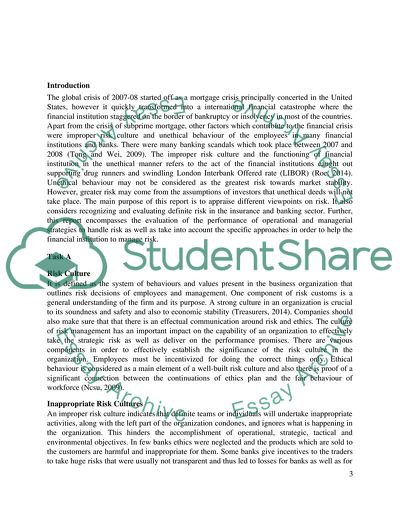Cite this document
(RISK MANAGEMENT IN BANKING & INSURANCE Essay Example | Topics and Well Written Essays - 1750 words, n.d.)
RISK MANAGEMENT IN BANKING & INSURANCE Essay Example | Topics and Well Written Essays - 1750 words. https://studentshare.org/finance-accounting/1855122-risk-management-in-banking-insurance
RISK MANAGEMENT IN BANKING & INSURANCE Essay Example | Topics and Well Written Essays - 1750 words. https://studentshare.org/finance-accounting/1855122-risk-management-in-banking-insurance
(RISK MANAGEMENT IN BANKING & INSURANCE Essay Example | Topics and Well Written Essays - 1750 Words)
RISK MANAGEMENT IN BANKING & INSURANCE Essay Example | Topics and Well Written Essays - 1750 Words. https://studentshare.org/finance-accounting/1855122-risk-management-in-banking-insurance.
RISK MANAGEMENT IN BANKING & INSURANCE Essay Example | Topics and Well Written Essays - 1750 Words. https://studentshare.org/finance-accounting/1855122-risk-management-in-banking-insurance.
“RISK MANAGEMENT IN BANKING & INSURANCE Essay Example | Topics and Well Written Essays - 1750 Words”. https://studentshare.org/finance-accounting/1855122-risk-management-in-banking-insurance.


